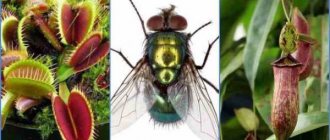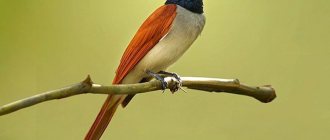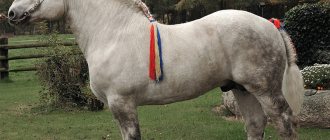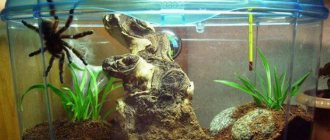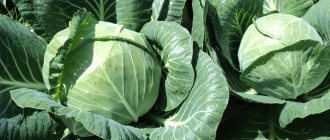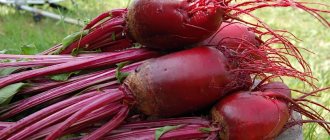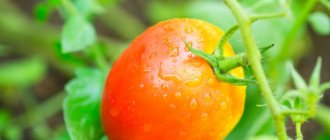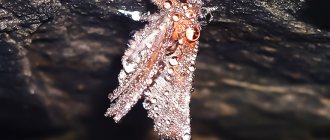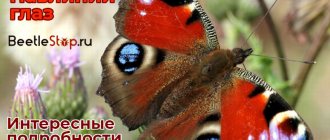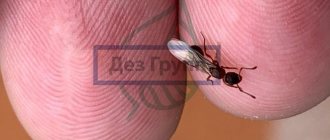- September 7, 2019
- Houseplants
- Svetlana Pavlova
The predatory herbaceous plant Venus flytrap, or Dionaea, is one of the most exotic indoor crops. In nature, it grows on peat soils in bogs. South America is considered its homeland. As an ornamental plant, it is widespread throughout the world. In the article we will consider the features and conditions for growing this flower.
Description of the Venus flytrap
Dionaea is a perennial insectivorous herbaceous plant. It belongs to the Roslyankov family. Under natural conditions, it grows in a humid temperate climate on soils containing insufficient nutrients. Having adapted to such living conditions, she learned to hunt insects and supplement her diet with the missing components. Under natural conditions, Dionaea grows in height no more than twenty centimeters, and at home it does not exceed 15 cm.
The plant has short bulbous underground stems, on which grow no more than seven leaves four to seven centimeters long, collected in a rosette. The Venus flytrap blooms in early summer with small white flowers that are located at the ends of the peduncles. After flowering, trap leaves begin to form. They have two petals, along the edges of which there are thorns. The lower part is bright green, and the inner color depends on the time of year.
Trap closing mechanism
The underside of the leaf feeds on light, and the upper trap doors provide the plant with living food. In summer, the traps are painted bright burgundy, which attracts insects. In addition, the trap cells secrete a special protein - a sticky substance. The insect, getting inside the leaf of the predator flower of the Venus flytrap, crawls along the slippery and sticky surface, touching small hairs that signal the trap to slam shut.
If an insect touches a hair twice in a row or two hairs at the same time, the trap immediately slams shut. After this, the compression phase begins, the valves are pressed tightly against each other, digestive enzymes are released and the insect is gradually digested. This takes from 5 to 12 days. The process of digesting prey depends on the age of the trap, the insect and the ambient temperature.
Nutrients are absorbed by the tissues of the Venus flytrap. After this, the trap opens again. Ideally, the insect should be one-third the size of the trap. Very small prey can escape, but too large can kill it. The remaining insect skeleton is washed away by rain or blown away by the wind, but can also serve as bait for others. During its life cycle, each trap catches up to seven insects.
Growing Dionaea
The predator can grow well in the garden and on the windowsill. How to grow a Venus flytrap at home? To do this, she needs to create the necessary conditions for development and growth. The best place in the apartment is considered to be window sills located on the western or eastern side. The plant needs to be in the sun for about five hours during the day in the evening or morning. If there is a lack of natural light, artificial lighting is used.
This flower feels great when it is grown in florariums or terrariums, creating high air humidity. The room where Dionaea is grown must be constantly ventilated, but the plant does not like drafts. In the summer, she feels good on the balcony. There is no need to constantly move the plant from place to place and turn the pot over; this causes stress. The most comfortable temperature in summer is considered to be from 20 to 30, and in winter – up to 7-10 degrees.
How to get rid of it: effective methods
To get rid of centipedes in an apartment, you need to solve two global problems:
eliminate sources of high humidity (since flycatchers will not live in dry rooms); bring other insects into the home, which are daily food for centipede hunters.
Otherwise, measures to eliminate centipedes will be crowned with only temporary success.
Additionally, surfaces in insect habitats are treated with insecticides. When cleaning, pay special attention to:
cracks in the floor and walls (centipedes usually hide in them during daylight hours, since the insect hunts at night); ventilation hatches through which centipedes can enter the apartment; bathroom and toilet; skirting boards (it is optimal to dismantle and treat the surfaces underneath them).
Note! Treatment with toxic agents is carried out in compliance with safety measures. It is necessary to first remove small children and pets from the house. After a few hours, the room is washed with clean water and ventilated.
To wash surfaces, you can use folk remedies (at the rate of a tablespoon of concentrate per liter of water):
chlorine-containing gels, solutions (for example, Belizna bleach); food vinegar 9%.
The rating of electric kettles and characteristics of household appliances can be seen in this article.
Powder products that allow you to effectively destroy uninvited flycatchers in your apartment - boric acid and diatomaceous earth powder:
Boric acid is laid out directly in powder along the “paths” of insects. Diatom powder is laid out using the same principle - this food additive is poisonous to centipedes.
For catching, sticky tapes and tape are used, which are stretched directly across the floor. Such traps, however, are ineffective, since centipedes are strong and often get out of the sticky surface, having lost several legs (they have the property of growing back).
Of the purchased poisons, any means to combat cockroaches are suitable - crayons, dusts, aerosols, gels.
Watering
The indoor flower Venus flytrap is very sensitive to the composition of water. Even settled tap water is not suitable for watering it. Do not water with rainwater; due to unfavorable environmental conditions, it may contain various impurities. It is best to use cold boiled or filtered water. The soil in the pot is kept constantly moist. Lack of water kills the traps. It is best to place the pot on a tray of water so that the plant itself regulates its need for moisture.
Caring for a fly-eater flower at home
The first thing anyone who purchased this plant needs to know is that Dionaea does not like shade. She needs a lot of bright sunlight. However, there is a small nuance here: in the same way, it does not like heating the soil - its roots do not tolerate it well. Therefore, it is necessary to monitor the temperature of the soil in the pot. To avoid overheating, it is necessary to place the pot of dionaea on a western or eastern window; It is desirable that the pot itself is light. The flytrap plant should not be placed near the north window; it will be dark there.
In the stagnant, musty air, this insectivorous plant withers; therefore, the room must be thoroughly ventilated. In the summer, you can move the pot with the Venus flytrap to an open place - a balcony, garden, etc. In an open place, it will also be easier for the green predator to get food. However, it is worth noting that this plant does not tolerate frequent movements and rearrangements very well - this is stressful for it; therefore, it is better to choose one permanent place for indoor keeping and one additional place for summer keeping.
If the flytrap plant is kept exclusively indoors, then it makes sense to take care of additional lighting, which can be done using conventional fluorescent lamps.
Despite the fact that the Venus flytrap leads a predatory lifestyle, it remains a common plant that needs to be watered. Carnivory is only an additional type of nutrition, and the plant, in principle, can survive without animal food; but without water it will quickly die, like all other plants. It should be noted here that the flytrap plant is extremely picky about the condition of the water. Even settled tap water contains impurities that can be harmful to it (while for other indoor plants these impurities are practically harmless). Even rainwater can contain unfavorable substances, especially if the apartment is located in a large industrial city, therefore it is not advisable to use rainwater. Filtered or at least boiled water is best for the flytrap plant.
The need for watering, as for “ordinary” plants, can be determined by the condition of the top layer of soil. Both over-watering and over-drying should be avoided. You can water both from above and from below through the tray.
The peculiarity of the Venus flytrap is that it does not tolerate any fertilizers. They are absolutely dangerous for her. This plant consumes only insects as “fertilizer,” and then only when it is hungry, that is, lacking nitrogen.
Care during the flowering period
The Venus flytrap can be seen in bloom in May or June. At this time, corymbose inflorescences are formed on a high peduncle, which consist of small white flowers, their diameter does not exceed one centimeter. At the same time, a sweetish aroma spreads.
Flowering continues for several weeks and greatly depletes the plant, which has a detrimental effect on the full development of traps. Therefore, experienced indoor flower lovers advise cutting off flower stalks before the buds bloom.
What to feed Dionaea?
The flycatcher synthesizes its own nutritional substances, including nitrogen, which it obtains from insects. She needs organic food when she is low on nitrogen. The rest of the time she is indifferent to insects. Don't try to feed a plant like the Venus flytrap just for fun. For her, this process requires the expenditure of a large amount of energy. Please note that at home the trap can be used no more than three times. You need to remember which mouth you put food in so that you can use a different one next time.
You should feed only live insects, because the trap reacts only to movement and gives the command to the valves to slam shut and release digestive juice. The size of the food should be small: a mosquito or a fly. The remaining food particles are removed. Dionaea eats rarely, once every one and a half or two months. The duration of insect digestion lasts up to ten days. Remember that an excess of nitrogen has a detrimental effect on the plant, it becomes weak and painful. Do not try to feed the flycatcher in any stressful situation: after a transplant, during illness, when there is a lack of light or a change in environment.
Description of the plant
Dionaea muscipula flycatcher belongs to the Sundew species - this is a tropical family for which, when caring at home, you must follow some rules, otherwise the flower will not survive.
Traps at the ends of leaves form after the flowering period. They are light green on the outside and reddish on the inside. Nearby are glands that produce aromatic substances to attract flies, mosquitoes, and beetles. To obtain the nitrogen necessary for the formation of tissues, the plant catches insects, since in nature it grows on soils depleted in terms of nitrogen components.
When a fly falls into the trap, the petals with bristles at the ends close and the digestion process begins, which can last up to 2 weeks depending on the weather and the amount of light. One trap can digest 2–3 insects, after which it dies.
After eating the insect, the Venus flytrap again opens its trap petals.
Wintering and rest period
In autumn, the Venus flytrap flower stops growing, the leaves dry out, turn black and fall off. He is preparing for hibernation. During this period, watering is reduced to a minimum; water is not poured into the pan. The plant is placed in partial shade with an air temperature of 7 to 10 degrees. It can be kept on a glassed-in balcony or in the basement. Until spring, the predator will not need either food or lighting. You just need to moderately moisten the soil periodically to prevent the roots from dying. With the onset of spring days around mid-March, the flower is returned to its original place and care is resumed. Active growth begins towards the end of May.
Transfer
It is best to replant the plant in the spring, when it comes out of winter hibernation. How to plant a Venus flytrap in a new pot? In this case, the following rules are observed:
- The plant's long roots require a deep, but not wide, container.
- When planting, handle the fragile roots of Dionaea carefully, try not to damage them.
- After removing the flower from the old container, water the roots to wash off any remaining soil.
- A new pot is filled with soil, mixing perlite and sphagnum moss in equal quantities, or taking two parts of peat and perlite, adding one part of quartz sand.
In order for the plant to take root well, increase watering and do not expose it to bright sun. This will take about a month.
Dionaea transplant - when necessary
Usually the Venus flytrap is sold in peat soil - in this case there is no need to replant it. If the roots are visible from the lower drainage holes, then you can take a pot with a height of 20 cm or more, prepare peat with calcined sand and pour it into a container. Moisten it with soft distilled liquid and make a hole for the roots.
Further:
- Remove the plant from the old pot. Hold the center of the rosette with one hand and squeeze the pot with the other to pull out the roots.
- Rinse the roots with distilled water. You can use boiled, settled water. This is done if the soil in which the flower was bought is not peaty.
- Replant carefully to a new location. There is no need to compact the soil - air should constantly flow to the roots.
Try not to let the soil fall into the traps, as they then die off. It is advisable to cover the roots with soaked sphagnum during replanting.
After transplanting, water the soil at the root, then place it in a place shaded from the sun. While rooting is taking place - 1 month - Dionaea is watered abundantly.
At home, the flytrap plant is not replanted every year, since the soil is not depleted. Replanting is necessary when the roots fall out of the drainage holes.
Reproduction
To reproduce the Venus flytrap, three methods are used:
- Dividing the bush. As the plant develops, daughter bulbs grow on the root tuber. The flower is taken out of the pot, the roots are freed from the soil and the daughter rosettes are separated from the mother bulb with a sterile knife. The cut areas are treated with crushed coal for disinfection. The bulbs are planted in new pots, placed in partial shade and wait for engraftment. This procedure can be carried out no more often than once every three years due to the slow growth of the flower.
- Cuttings. A leaf is separated from the predator, the cut is treated with “Kornevin” and planted in a prepared substrate. Cover the container with a transparent cap and place it in a sunny place, providing watering. After about three months, a root appears and the cutting is transplanted to a permanent location.
- Seeds. This method is not popular because the seeds often do not germinate. To reproduce, they are soaked for an hour using distilled water, after which they are placed in a substrate, which is prepared from two parts moss and part sand. The seeds are placed on the surface, sprayed from a spray bottle and covered with film. The favorable temperature for their germination is not lower than 28 degrees. The first shoots will appear in about a month and a half. Picking into separate pots is done when two true leaves appear and placed in a permanent place.
You can propagate using any of the described methods, but the appearance of a new plant takes a long time.
Diseases
Diseases often occur due to improper care of indoor flowers. To grow Dionaea, certain conditions are required. When they are violated, the following ailments occur:
- Yellowing of traps means the watering regime is disrupted: hard water is used or the soil contains excess calcium.
- Yellowing and falling leaves are a consequence of insufficient soil moisture.
- Brown spots on the ends of trap leaves are caused by sunburn or excess fertilizer.
- Sooty fungus - occurs when the soil in a pot is constantly waterlogged. Leaves and stems become covered with a black coating. Spraying with fungicides will help eliminate the disease.
- Gray rot - a gray fluff of mold appears on the stems. In this case, the affected parts should be immediately removed and the flower should be sprayed with a fungicide solution.
- Bactericidal damage - occurs due to the inability to digest a caught insect. Trap petals turn black and become rotten. The disease progresses rapidly, spreading to the entire plant. It is necessary to eliminate the damaged leaf, and then treat the plant with a fungicide.
Diseases and pests
Paradoxically, the Venus flytrap, which eats insects, can also suffer from them. Often its leaves are attacked by aphids, causing them to become deformed. To get rid of it, use suitable insecticides. The plant can also be attacked by spider mites; it is also eliminated using special chemicals.
Often the cause of infection is incorrect content. So, if the soil is too wet, then the plant is attacked by a sooty fungus, the sign of which is black spots on the leaves and stems. If not properly cared for, the plant will also become susceptible to mold; to get rid of it, you should remove the affected parts of the plant, and treat the remaining healthy plant with a fungicide.
The carnivorous plant is also affected by bacterial diseases. This can happen, in particular, due to the inability to digest food that is too large: the caught insect begins to rot and spread microorganisms. At first, only the “mouth” in which the ill-fated prey is located is affected - it turns black and falls off. The disease quickly spreads throughout the plant, so it must be dealt with immediately. A trap with rotting insects must be destroyed while the remaining parts of the plants are still healthy.
